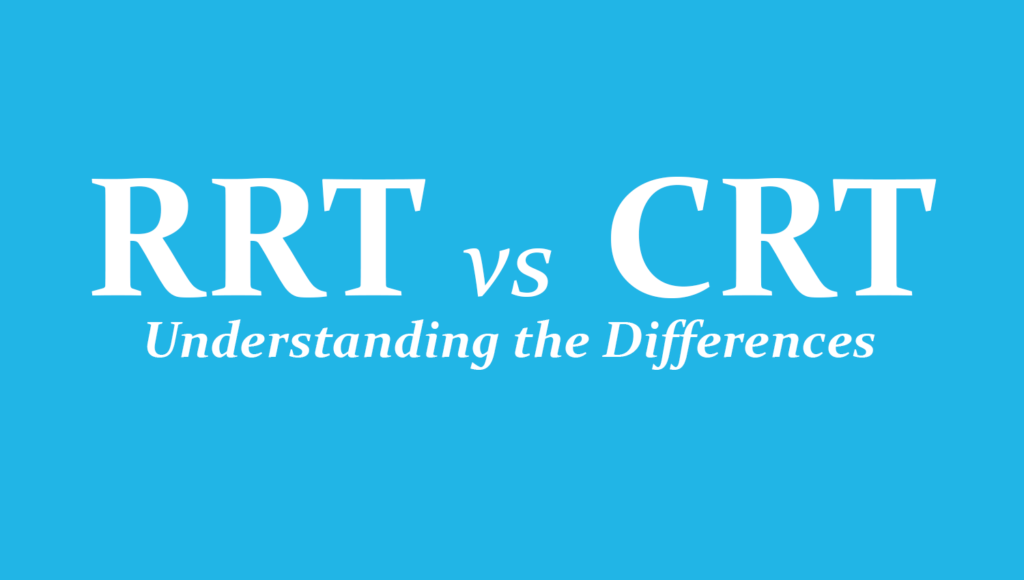Respiratory therapy is a trending career path and an occupation that has proved to be vital, more so than ever, over the last few years. Whether you are interested in hiring an RT or are looking to become one, it is important to know the differences between the different types of respiratory therapists (RTs). Keep reading below to take a closer look at the variances between RRTs and CRTs in healthcare so you make an informed decision when the time comes.
Respiratory therapists are licensed healthcare professionals who specialize in diagnosing, treating, and managing respiratory illnesses such as asthma, COPD, and pneumonia. There are two main types of respiratory therapists: Registered Respiratory Therapists (RRTs) and Certified Respiratory Therapists (CRTs).
Both types of respiratory therapists hold important roles in healthcare settings such as hospitals, clinics, and specialty care centers. Both groups must pass the National Board for Respiratory Care’s (NBRC) Therapist Multiple-Choice (TMC) exam and are certified based on their scores. Scores that are passing but are on the lower end (between 66% and 72%) are ranked at CRTs while higher scores are RRTs. CRTs are able to take the exam again after challenging the Clinical Simulation (CSE) to prove that they are prepared to be an RRT, as RRTs are considered the respiratory therapy standard of excellence.
Ultimately, in the workplace, there is little difference between RRTs and CRTs. Both types of respiratory therapists are trained to help patients with breathing issues and are prepared to handle intensive care situations. They are both capable of working equally with patients who have common or more complex needs, such as those in critical care or need mechanical ventilation.
In the workplace, the core difference between the two titles is often pay. Despite taking the same exam, CRTs are considered to hold an entry-level certification while RRTs are considered to hold a more advanced certification. Because of this perceived disparity, those with RRTs are likely to be offered more on an hourly basis.
This perception of difference between CRTs and RRTs can be harmful to a large portion of a qualified workforce. Thankfully, many states have added clauses to grandfather-in those who were certified beforehand, but, as early as 2015, some states began to only allow RRTs to be registered as licensed respiratory therapists. While this was a concept to create a workforce that only provided the highest standard of care, it instead made it more difficult for a qualified workforce to be able to provide care to those in need.
Regardless of which type of respiratory therapist you choose, both RRTs and CRTs play important roles in improving the health and well-being of patients with respiratory issues. If you are a student looking for their first respiratory therapy job or a dedicated professional looking for a CRT or RRT role, then check out our job board here. If you are looking for something a little different, then send us an updated resume here and we will connect you with a recruiter to talk about other opportunities.
If you are looking to hire an RRT, CRT, or any other healthcare professional, then connect with a specialized recruiter today by clicking here!











